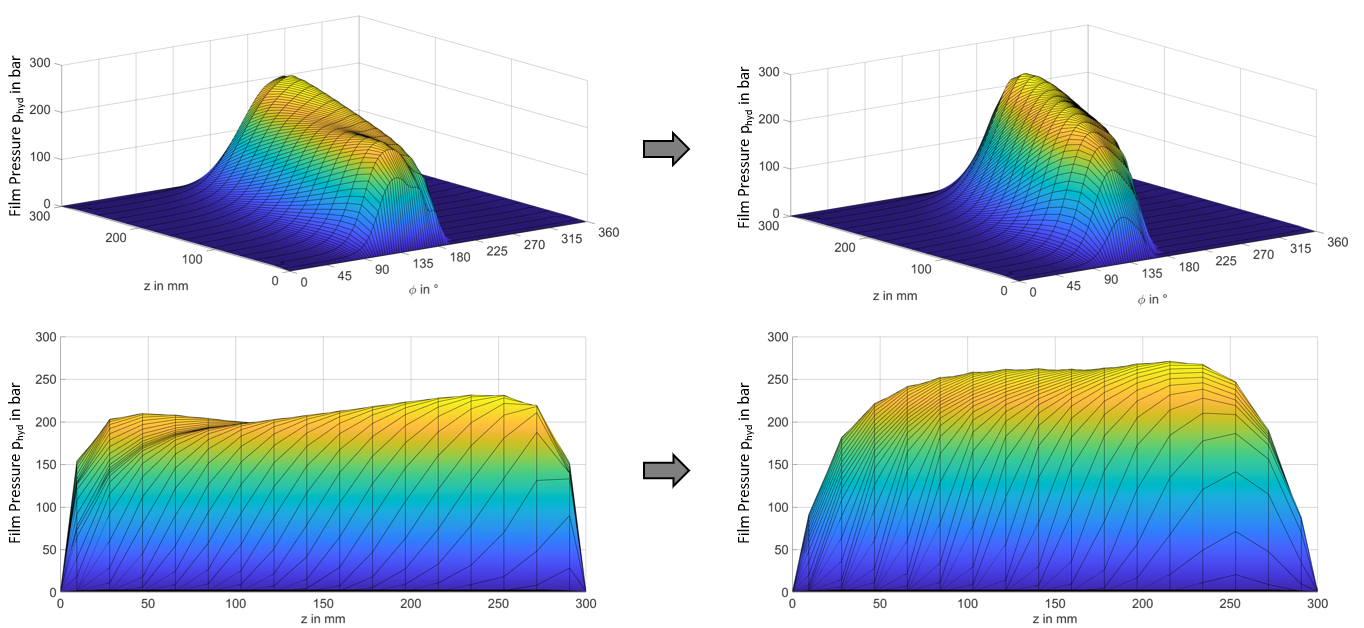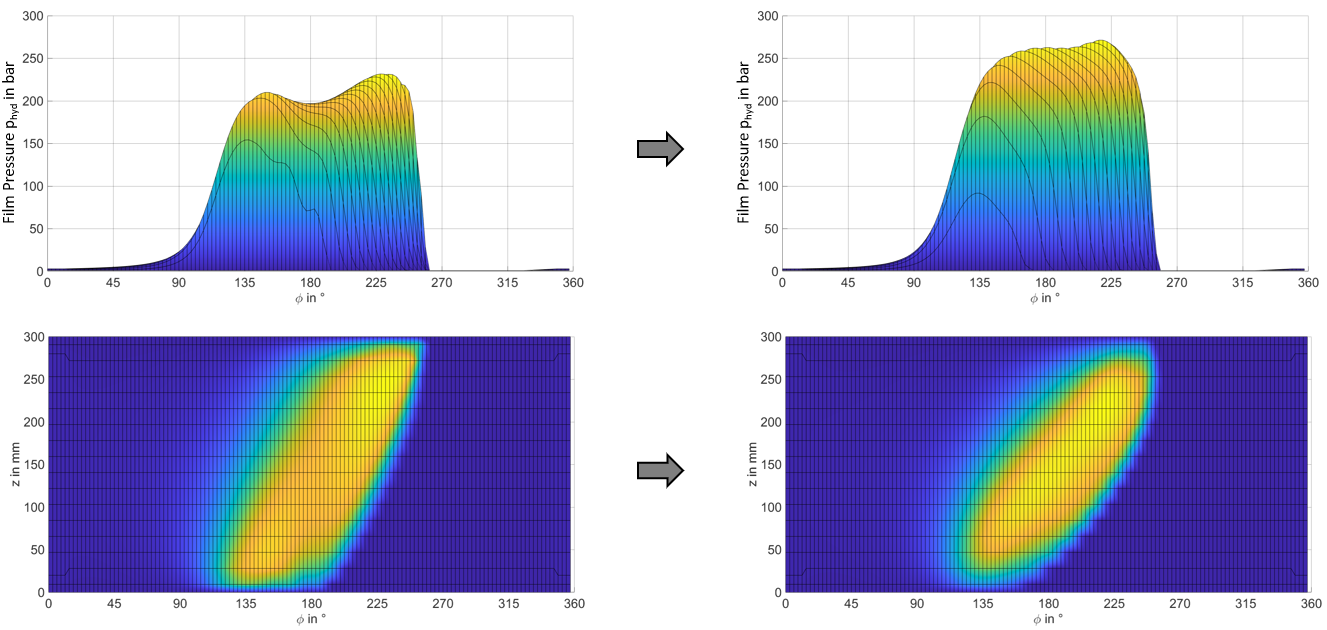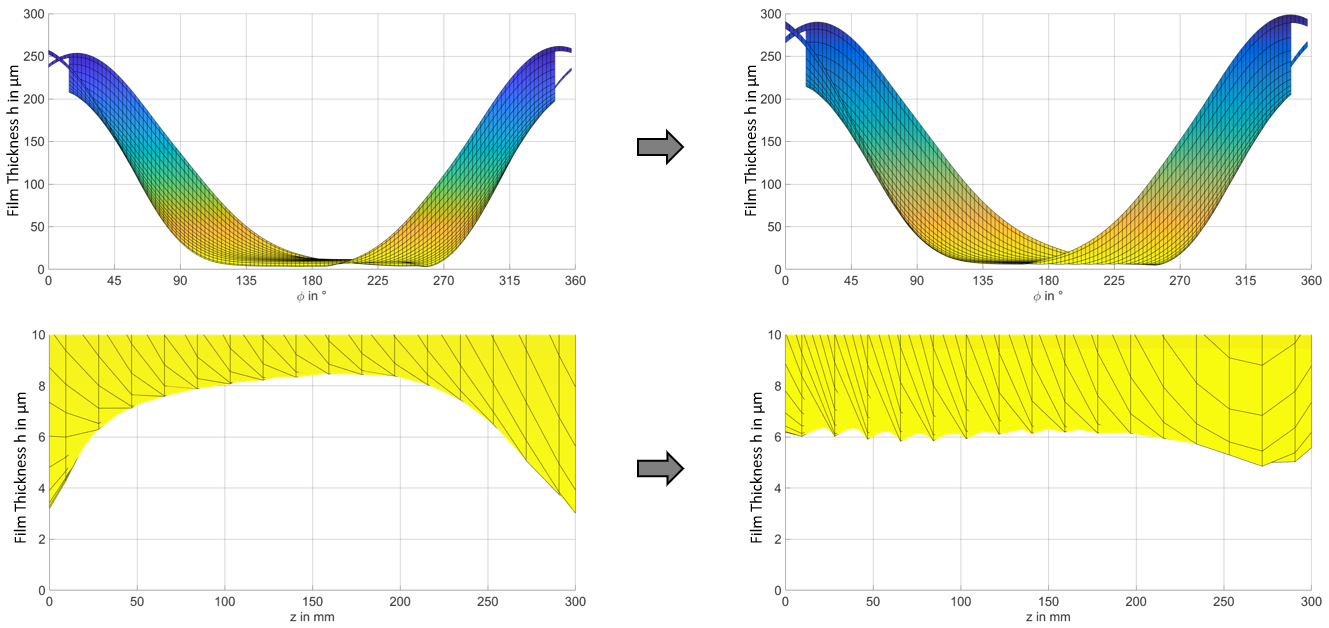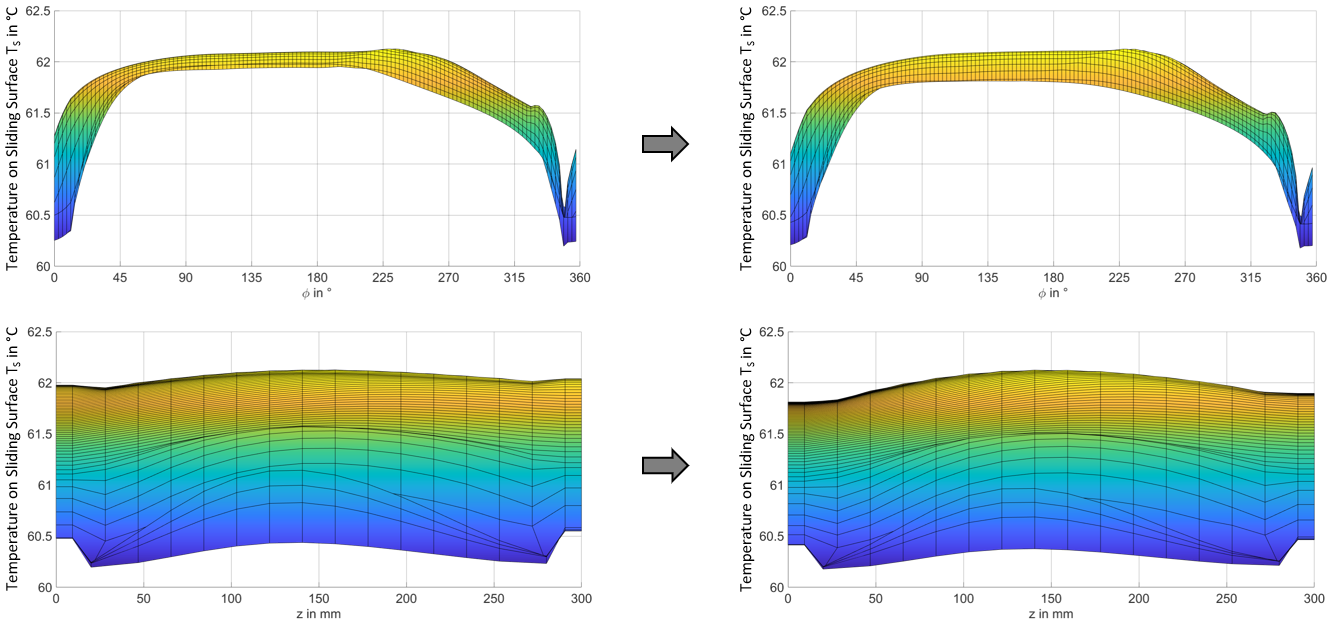Optimization of axial profiling for pins in planetary plain bearings
Axial profiling is a common measure for reducing the local contact intensity in planetary plain bearings. In principle, two different concepts are used. On the one hand, profile relief is used at bearing edges with high pressures, which, however, results in a reduction in the load-bearing bearing width. On the other hand, a continuous parabolic characteristic is used across the entire bearing width, which allows a significant reduction in the pressure level to be achieved. The advantage of this method is that the edge load results from the tilting movement of the planet relative to the pin around the axis in the load direction. This allows a large range of almost constant layer thickness to be built up at nominal load. This continuous pressure level in the axial direction is accompanied by a homogeneous load distribution in the bearing. The influence of axial profiling on the pressure level was investigated in detail in a publication by Hagemann and Ding.
The supplementary program for COMBROS PG developed at the Institute of Tribology enables automated optimization of the axial profiling of the planet pin. The algorithm is linked to the existing planetary gear bearing calculation program and determines the coefficients of a sixth degree polynomial for the axial profiling. The option of entering starting coefficients makes it easier to optimize existing bearing concepts. In addition, the profiling of the bearing can be adapted specifically for variable operating cases by selecting different optimization variables and convergence criteria.





